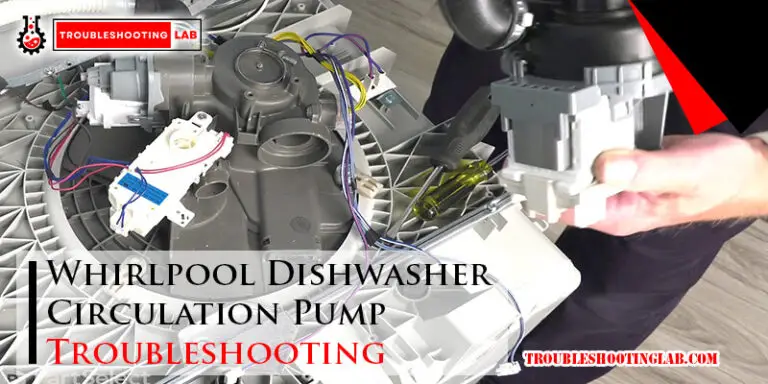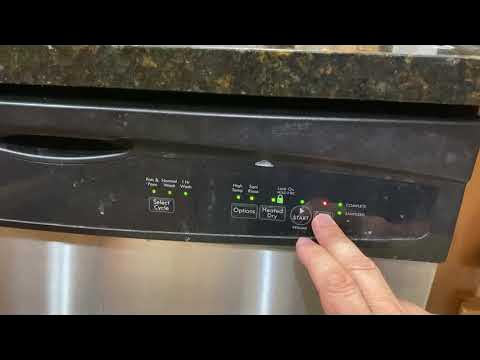Viking Refrigerator Ice Maker Troubleshooting: Easy Fixes
Is your Viking refrigerator’s ice maker giving you trouble? You’re not alone.
A malfunctioning ice maker can be incredibly frustrating, especially when you’re counting on it to keep your drinks cold or prep for a gathering. The good news? Most ice maker issues can be resolved quickly with a little troubleshooting. In this guide, we’ll walk you through the most common problems and their simple fixes.
Whether your ice maker isn’t producing ice, is making strange noises, or is dispensing ice inconsistently, we’ve got you covered. Stick around—by the end of this article, you’ll have the tools and confidence to get your ice maker back in working order. Don’t let this small hiccup ruin your day; let’s solve it together!

Credit: www.reddit.com
Common Ice Maker Problems
Having trouble with your Viking refrigerator ice maker? You’re not alone. Ice maker problems can be frustrating, especially when you rely on it for cold drinks or to keep food fresh during gatherings. Let’s dive into the most common issues and how to troubleshoot them effectively.
Ice Maker Not Producing Ice
Is your ice maker sitting idle? This is a common complaint and often comes down to basic issues. First, check if the ice maker is turned on. It may sound obvious, but sometimes switches get flipped accidentally.
Next, inspect the water supply. A clogged or kinked water line can stop the ice maker from working. Make sure water flows freely by straightening the line and clearing any blockages.
If the water line seems fine, take a look at the freezer temperature. It should be set between 0–5°F. Temperatures above this range can prevent ice production.
Ice Maker Producing Small Or Misshapen Ice
Small or weirdly shaped ice cubes can ruin your drink experience. This issue is often caused by low water pressure. Test your water dispenser—if the water comes out slower than usual, the pressure might be too low.
Another culprit could be a dirty water filter. Over time, filters get clogged and restrict water flow. Replace the filter every six months for optimal performance.
Also, take a moment to check for ice buildup. Excess ice around the mold can prevent the ice maker from filling properly.
Ice Maker Leaking Water
A leaking ice maker can create a slippery mess in your kitchen. Start by checking the water line connections. Loose or damaged connections often cause leaks.
Inspect the ice maker’s fill valve. If it’s not shutting off properly, water can overflow and leak. Replacing the valve is usually a quick and inexpensive fix.
Lastly, ensure your refrigerator is level. A tilted unit can cause water to spill out of the ice maker rather than flow into the tray.
Ice Maker Making Unusual Noises
Is your ice maker making sounds you’ve never heard before? Grinding, buzzing, or clicking noises might signal a problem. Begin by checking for ice jams. Pieces of ice stuck in the mechanism can create strange noises.
If there’s no ice jam, the motor might be struggling. Over time, wear and tear can cause the motor to become noisy. Replacing it can restore peace in your kitchen.
Sometimes, noises are just the ice maker going through its normal cycle. However, if the sounds are loud or frequent, it’s worth investigating further.
Don’t let ice maker problems ruin your day. By tackling these common issues, you can keep your Viking refrigerator running smoothly. Which of these problems have you faced before? Share your experience and tips in the comments below!
Basic Checks Before Troubleshooting
Before diving into complex solutions, start with the basics. Sometimes, the simplest checks can solve your Viking refrigerator ice maker issues. These steps will ensure you’re not overlooking something straightforward.
Ensuring Proper Water Supply
Is your ice maker getting enough water? This is the first thing to check. Confirm that the water line is connected securely to your refrigerator.
Inspect the water valve to ensure it’s fully open. Even a partially closed valve can restrict water flow, affecting ice production.
If you suspect a blockage, disconnect the water line and look for clogs or kinks. A clogged line can prevent your ice maker from working efficiently.
Checking Power Connections
Without power, your ice maker is just a fancy box. Ensure that the refrigerator is plugged into the wall securely. A loose plug can cause intermittent issues.
Check the circuit breaker. If the breaker has tripped, reset it and see if the ice maker starts functioning. Don’t overlook the possibility of a blown fuse.
Sometimes a simple power outage can reset your refrigerator settings. Double-check if the ice maker is turned on in the control panel.
Resetting The Ice Maker
If all else fails, a reset might do the trick. Look for the reset button on your ice maker. It’s usually located near the ice tray or on the control panel.
Press and hold the reset button for a few seconds. You should hear a chime or see the lights blink, signaling the reset process has started.
After resetting, wait for the ice maker to cycle through. This can take up to an hour, so be patient and check if ice production resumes.
Have you tried these basic checks? They’re quick, simple, and often effective. You might be surprised how often these steps solve the problem without any professional help.
Fixes For Ice Maker Issues
If your Viking refrigerator ice maker has stopped working, don’t panic. Most ice maker issues can be resolved with a few simple fixes. Let’s dive into specific steps you can take to get your ice maker back on track.
Cleaning The Water Filter
A clogged water filter can restrict water flow to your ice maker. Check your refrigerator’s manual to locate the filter. If it’s dirty or hasn’t been replaced in over six months, it’s time for a change.
To replace the filter, twist it out, grab a new one, and twist it back in. It’s that simple. Once replaced, flush the water system by running a few cups of water through the dispenser.
Does your ice still taste odd after cleaning the filter? It might be due to leftover debris. Run a few cycles to ensure fresh, clean ice.
Unclogging The Water Line
Ice makers rely on a steady water supply. If your ice maker isn’t producing ice, the water line might be clogged. Mineral deposits or frozen water can block the line.
Turn off the water supply to your refrigerator and disconnect the water line. Check for any visible blockages and flush the line with warm water. Reconnect it, turn the water back on, and test your ice maker.
If the water line freezes frequently, consider insulating it. This small step can save you from future headaches.
Adjusting The Freezer Temperature
Your freezer’s temperature plays a big role in ice production. If it’s too warm, the ice maker can’t freeze water properly. If it’s too cold, components may freeze and stop working.
Set your freezer temperature to 0°F (-18°C), which is the ideal setting. Use a thermometer to double-check the internal temperature. If you notice frost buildup, defrost your freezer to restore its efficiency.
Are you unsure if the temperature adjustment worked? Monitor your ice production over the next day to confirm.
Repositioning The Ice Maker Arm
The ice maker arm controls when the ice maker stops producing ice. If it’s stuck in the “off” position, you won’t get any ice. Sometimes, it can accidentally get bumped or jammed.
Locate the arm, which is usually a metal or plastic rod near the ice bin. Gently push it down to the “on” position. Avoid using excessive force to prevent damage.
Is the arm moving stiffly? Check for ice buildup around it and carefully remove any obstructions. A free-moving arm ensures smooth ice production.
By following these steps, you’ll likely solve your ice maker issues quickly. Have you tried any of these fixes before? Share your experience below and let others know what worked for you!
When To Replace Ice Maker Parts
Viking refrigerator ice makers are reliable, but parts can wear out. If your ice maker stops working, it might need replacement parts. Knowing when to replace these components can save time and frustration. Regular maintenance and troubleshooting help identify problems early.
Identifying Faulty Components
Start by checking for visible damage or wear on parts. A broken arm or cracked tray may signal the need for replacement. If the ice maker isn’t making ice, test the water inlet valve and motor. A multimeter can help check for electrical issues. Listen for unusual noises, like clicking or grinding, from the ice maker. These sounds often indicate a mechanical failure.
Replacing The Water Inlet Valve
The water inlet valve controls the flow of water to the ice maker. If it’s clogged or damaged, the ice maker won’t fill with water. Shut off the water supply and unplug the refrigerator. Locate the valve, usually at the back of the fridge. Disconnect the water lines and remove the faulty valve. Install the new valve by connecting the water lines and securing it in place. Restore power and water, then test the ice maker for proper function.
Installing A New Ice Maker Assembly
If the entire ice maker assembly fails, replacement may be the best solution. Unplug the refrigerator and remove the ice maker’s mounting screws. Disconnect the electrical harness and take out the old assembly. Position the new ice maker in place and attach the screws. Connect the electrical harness securely. Plug in the refrigerator and wait for the ice maker to start its cycle.
Preventive Maintenance Tips
A Viking refrigerator ice maker can last longer with regular care. Simple steps can prevent breakdowns and ensure smooth operation. Following a preventive maintenance routine saves time and avoids costly repairs.
Regular Cleaning Schedule
Cleaning the ice maker keeps it efficient and hygienic. Remove ice build-up from inside the ice maker weekly. Wipe down the exterior with a damp cloth to keep the surface clean. Use a soft brush to clean the ice trays and other small areas. Avoid harsh chemicals that could damage parts or leave residue. Regular cleaning prevents mold and bacteria from forming.
Inspecting For Wear And Tear
Check the ice maker for visible damage or worn-out parts monthly. Look for cracks in the ice tray or broken seals. Examine hoses and connections for leaks or blockages. Tighten loose screws or bolts to avoid larger issues. Replace faulty components early to prevent major repairs later.
Using Quality Water Filters
Use high-quality water filters to improve ice quality and protect the ice maker. Poor filters allow impurities to clog the system and reduce efficiency. Change the filter every six months or as recommended by the manufacturer. Clean filters ensure smooth water flow and longer machine life.

Credit: www.reddit.com
When To Call A Professional
Dealing with an ice maker that’s not working can be frustrating. Sometimes a quick fix like cleaning the unit or unblocking a jammed ice tray can solve the issue. But what if the problem persists? That’s when you need to think about calling a professional. Let’s break it down so you’ll know exactly when to pick up the phone.
Signs Of Major Malfunctions
Is your ice maker making loud, unusual noises? That’s a red flag. Grinding, banging, or humming sounds often signal mechanical issues that need expert attention.
Another sign is water leakage. Puddles around your Viking refrigerator can mean there’s a problem with the water line or a cracked component.
No ice at all? If resetting the unit or checking the water supply doesn’t help, it may point to a faulty motor or a broken thermostat.
Ask yourself: Is this a one-time glitch, or is your ice maker consistently failing? Recurring problems are a clear sign you need professional help.
Cost Vs. Benefit Of Repairs
Before calling a repair service, think about the cost. A simple fix like replacing a valve might be worth it. But if the repair costs are creeping toward the price of a new refrigerator, it’s time to rethink your options.
Consider the age of your Viking refrigerator. If it’s over 10 years old, parts may be harder to find, and repairs could become a frequent expense.
Weigh the benefits: Is restoring your current ice maker more convenient and affordable in the long run, or is upgrading to a newer model the smarter choice?
Finding Reliable Repair Services
Not all repair services are created equal. Look for professionals who specialize in Viking appliances. They’ll have the expertise and parts to get the job done right.
Check online reviews and ask for referrals. A trusted repair service will have a track record of satisfied customers and transparent pricing.
Always ask about warranties. A good repair technician will stand by their work, giving you peace of mind that the problem won’t come back anytime soon.
So, what’s your next step? If your ice maker is showing signs of major malfunctions, repairs seem cost-effective, and you’ve found a reliable service, it’s time to make the call. Don’t wait too long—addressing issues early can save you time, money, and stress.

Credit: m.youtube.com
Conclusion
Fixing a Viking refrigerator ice maker doesn’t have to feel overwhelming. Start by checking for common issues like water supply or clogged filters. Regular maintenance can help prevent most problems before they start. If the issue persists, consider contacting a professional for help.
Always follow the user manual for accurate guidance. A properly working ice maker ensures fresh ice whenever you need it. With patience and basic troubleshooting, you can keep your Viking refrigerator running smoothly. Stay proactive, and your ice maker will stay reliable for years.





